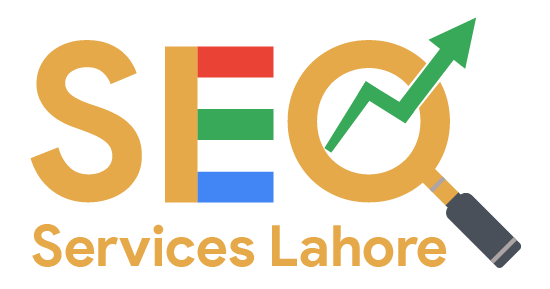
Why Ecommerce Is So Important for Your Business?
May 5, 2022
What is SEO
July 18, 2022Local SEO is a search engine optimization (SEO) strategy that helps your business gain more visibility in Google’s local search results.
Any business with a physical location or serving a geographic area can benefit from improving their local search engine optimization. If you do a Google search for relevant keywords related to your business and find a tab with 3 listings (known as a “Pack of Map” or “Map Pack”) below, you can help your business grow your SEO based on location.
But if you want to learn more about local SEO, you need to know how Google works.

How Does Google work?
When you enter a search term on Google, it checks the index or ranking of various websites, to find the most relevant site to out of a list of sites that match your search. What most people don’t realize is that Google doesn’t do a direct site-wide search every time someone types something in the search bar. In fact, it looks for the perfect site for your query out of the copy of every website found by Google. This copy is called a Google index. In other words, the Google algorithm tries to find the perfect match for your query out of the pool of its indexed sites (which can be in billions).
To create the index, Google uses a small program called “bots” to crawl the web. Each bot (also known as “spider”) works the same way: it starts on a page, then follows the links on the page, looks at the content of the next page, and so on…
When the website content is crawled, it is stored on Google’s servers and an index is created. The bots work at blazing speed, scanning billions of pages at top speed. This ensures that the references are as accurate as possible and that new websites and links can be found quickly.
How Does Google Rank Search Results?
Google uses multiple steps to rank hundreds of thousands of websites at the same time. These functions are called algorithms. When you search for something on Google, the algorithm checks the index and returns a list of websites that match your search with organic results. These results were selected and ranked based on the relevance, content quality, site performance and the popularity of incoming links.
The algorithm examines a number of factors inside and outside the site to determine which sites are relevant to your search. All related websites are added to the list, which is then given priority. Based on a number of factors inside and outside your website, the algorithm determines which sites respond well to your searches and which sites appear at the top of the results.
SEO or Search Engine Optimization affects the relevance, reputation and relevance of your website. When you organize the right elements of your website traffic correctly, your website will rank higher in the search results.

Local SEO is Different
What about local search results? After analyzing user behaviour from more than a billion searches, Google found that people searching for a particular type of business want results from their immediate environment or local area. For this reason, Google’s local search algorithm includes a proximity factor, which is a great way to say that Google ranked your site for local keywords (full local search matches). This “proximity factor” is the most important factor which distinguishes Local SEO from International SEO. This can happen even if the researcher does not include the city name or “near me” in their search.
If you work and want to deliver pizza for lunch, for example, a search query in Google for “Pizza Delivery Service” will list places near your office on your local SERPS (search engine results page). But if you try the same search at home, you’ll get completely different results. This makes sense because you have to ship the pizza from nearby.
Local search has been around for years, but it’s limited because people only use their desktop computers. However, with the recent growth in mobile internet access, mobile search has increased, making local SEO critical to the success of any business offering local products or services and local marketers.
What Really Matters for Local Search Engine Optimization?
What does this mean for SEOs? Although local map packs appear in Google’s default organic search listing, a separate algorithm supports Google’s best search results for local rankings and results for local map packs. As a local business, you have the opportunity to appear in top organic search results and local map packs at the same time.
When it comes to marketing your new local business online, one of the biggest challenges is knowing what to focus on to make your project as effective as possible. Translated content and local link popularity are factors, just like Google’s traditional search algorithm. So it’s important to create a local landing page for each of your sites, especially if you’re a multi-site business because it needs to include not only your business name but also details such as subheadings and title.
In addition, location-related factors will be taken into account, such as your Google My Business listing, local citations from data aggregators, and mentions of reviews that your local customers need to post in their local SEO rankings etc. It’s also important to note that there are SEO tools that focus on local search and can help you develop a locally targeted SEO audit, from keyword research aimed at building your local audience to consumables that create tags. List and manage Google My Business listings, business profiles, and Google listings. And also monitor recordings in local packets.
Website content is a key factor, as is Google’s traditional search algorithm, but location-based factors such as Google My Business, citations, and review citations are also taken into account.
Local SEO is a marketing technique that involves optimizing your online presence for better visibility in local search results. Local SEO is about increasing search visibility for businesses that serve their communities directly. This could be a physical business with a local location, such as a grocery store or dental office, or a service business that operates in a specific geographic area, such as an electrician or home improvement company, or. This better vision is achieved through various tasks, such as:
- Manage Your Google Business Profile;
- Grow Your Local Reputation
- Improve Your Website
- Citations Building
- Monitor Your Competitive Research Landscape
- Monitor and Apply Changes to Google
- Build Local Links
- Apply Anti-Spam Techniques
- Be Active On Google Maps





